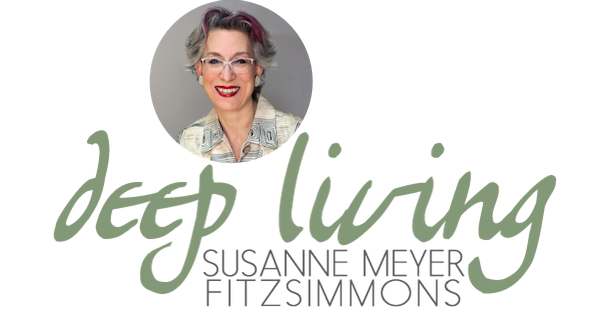We have been without air conditioning for a bit over a week and it may be another week until the replacement part makes its appearance. Besides slower thinking, general sluggishness, clumpy salt and chewy crackers, the heat has had an immediate effect on my cooking, or rather lack thereof.
Summer is always the season of lighter meals, but air conditioning permitted me to still do a fair amount of cooking - just because I could. Not now! Raw food diet - salads and more salads, some precooked legumes from the freezer for protein, an egg here and there (doesn't heat up the kitchen too much to cook an egg), a lot of Caprese (mozzarella/tomato) and lots of fresh fruit. And my endless thirst for hot tea all day long has given way to glasses and glasses of cold water. Perhaps I should have tried out that raw food diet I experimented with in February of all months, when I was looking to reboot my system rather - see a post on it. But with the heat I just don't have the energy to experiment wildly, and my cooking adventurousness and eagerness to try out new recipes has slowed with rising temperatures.
It's amazing how quickly we lose touch with the connection to nature when we live in an artificial environment. The effect and character of the seasons flattens out. Diet and cooking flatten out, the biggest contrasts between summer and winter cooking diminish. On the other hand, my connection to these last few hot days of late summer has increased.
Unfortunately, our business oriented culture is relentless and does not permit us a slower paced summer. Business must go on. Yes, we are gaining comfort with air conditioning, we are gaining the ability to conduct business no matter what it's like outside, but we are also losing connection to nature and the seasonal differences, and the starker contrasts that come with it.











